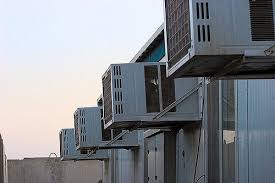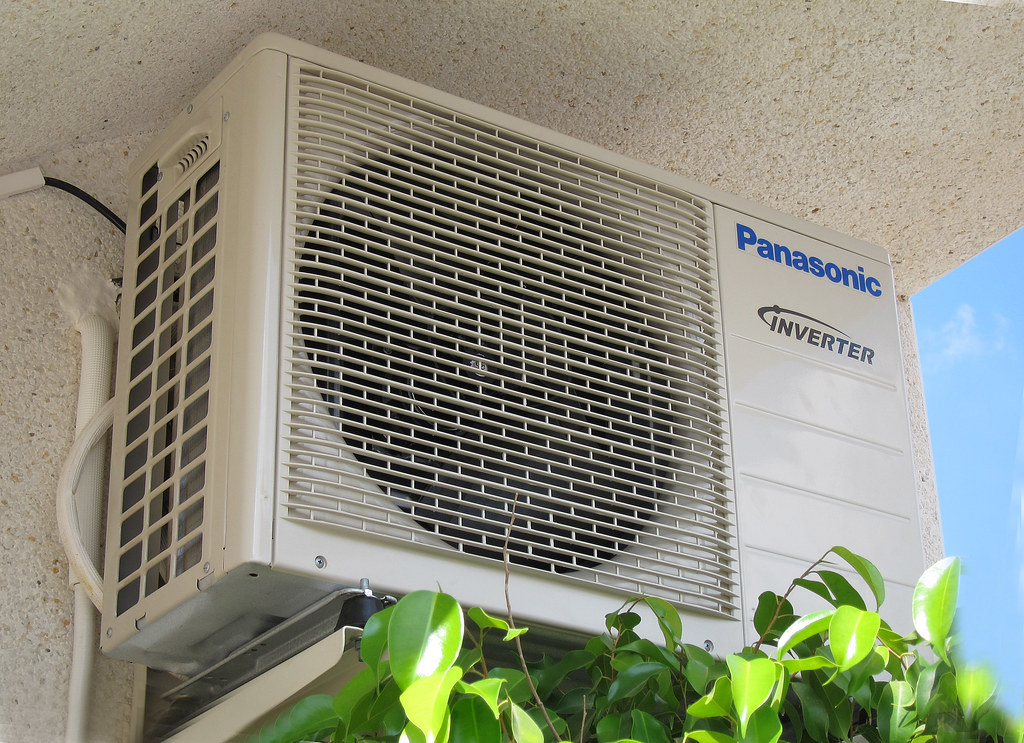DOHA, Qatar — It was 116 degrees Fahrenheit in the shade outside the new Al Janoub soccer stadium, and the air felt to air-conditioning expert Saud Ghani as if God had pointed “a giant hair dryer” at Qatar.
Yet inside the open-air stadium, a cool breeze was blowing. Beneath each of the 40,000 seats, small grates adorned with Arabic-style patterns were pushing out cool air at ankle level. And since cool air sinks, waves of it rolled gently down to the grassy playing field. Vents the size of soccer balls fed more cold air onto the field.

Air conditioners (Image: Todd Morris/Flickr)
Ghani, an engineering professor at Qatar University, designed the system at Al Janoub, one of eight stadiums that the tiny but fabulously rich Qatar must get in shape for the 2022 World Cup. His breakthrough realization was that he had to cool only people, not the upper reaches of the stadium — a graceful structure designed by the famed Zaha Hadid Architects and inspired by traditional boats known as dhows.
“I don’t need to cool the birds,” Ghani said.
Qatar, the world’s leading exporter of liquefied natural gas, may be able to cool its stadiums, but it cannot cool the entire country. Fears that the hundreds of thousands of soccer fans might wilt or even die while shuttling between stadiums and metros and hotels in the unforgiving summer heat prompted the decision to delay the World Cup by five months. It is now scheduled for November, during Qatar’s milder winter.
The change in the World Cup date is a symptom of a larger problem — climate change.
Already one of the hottest places on Earth, Qatar has seen average temperatures rise more than 2 degrees Celsius above preindustrial times, the current international goal for limiting the damage of global warming. The 2015 Paris climate summit said it would be better to keep temperatures “well below” that, ideally to no more than 1.5 degrees Celsius.
Read more: Washington Post



